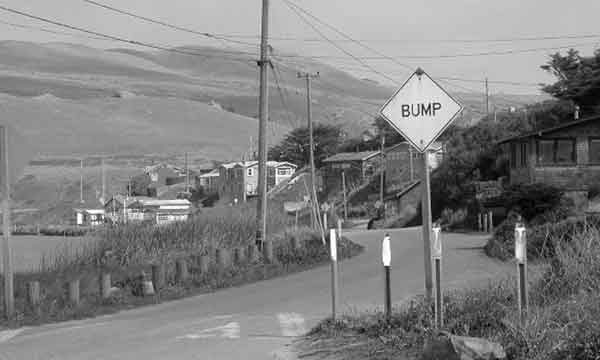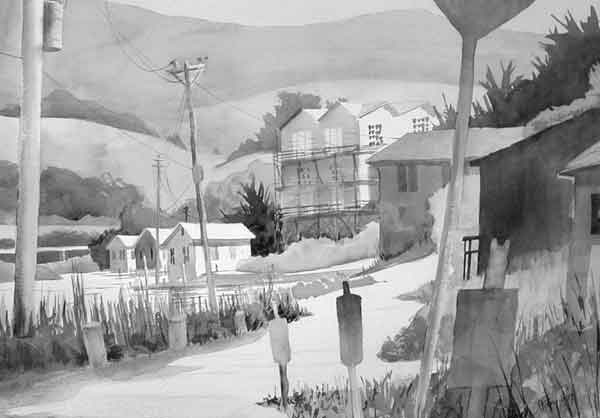“Perspective” is a catch-all term that covers many tricks, conventions, and rules that artists have invented for suggesting depth in a painting or drawing. Knowledge of perspective is important to anyone wrestling with the central mystery of representational art: “How can I make a convincing two-dimensional picture of three-dimensional reality?”
Planar Perspective copies the way far things are often overlapped and partially hidden by nearer things. In landscapes the grass in the foreground plane overlaps the trees in the middle ground plane, which overlap the plane of the mountains, which overlap the most distant plane of the sky. When you place the pear in front of the apple in your still life, or copy how the model’s arm hides part of her breast in a figure drawing, you are also employing planar perspective.
The fact that near objects tend to block your view of farther objects seems almost too obvious to mention. Nevertheless, overlapping shapes constitute the most powerful distance cue available to you. Ancient Egyptian and Oriental artists used planar perspective almost exclusively to show depth in vast landscapes and complex multi-figure scenes. Each figure’s position in space was indicated solely by its degree of overlap and vertical placement in the composition. A figure’s size relative to other figures indicated its importance in a hierarchy of rank, not its position in space.
Good planar perspective often requires you to simplify or clarify overlapping shapes in your composition. When you are looking at a scene, your body gives you cues about distance that will not be available to the viewer of your painting. For example, when you look from a near group of green trees to a far group of green trees, your eyes change focus and give you a tiny muscular cue that the second group is more distant. Likewise, when you move your head slightly, the nearer trees appear to move sideways faster than the distant trees. Furthermore, in nature you get distance cues from watching how things move and change over time–the wind blows the grass, the water ripples, the sheep wander through the field, and shadows shift as the clouds drift and the sun moves across the sky.
Because you can’t put proprioception, parallax, or movement over time into your painting, you must replace these cues with planar perspective. You have to move the clumps of trees, bodies of water, sheep and clouds around so that overlapping shapes of different colors and values can clearly show what is in front of what.
Salmon Creek reference photo & painting
This is Salmon Creek, a northern California beach community with a lot of ramshackle charm. The photo has several drawbacks that had to be overcome by altering the planar perspective. Detail is lost in the too-dark shadows and where overlapping buildings are too close in value to show up well. Excessive depth of field makes the distant houses too small to see easily. The “BUMP” sign is poorly placed.
In the finished painting I altered the size, color, value, and placement of overlapping forms to reduce the sheer number of shapes. Still, there are about 15 planes stepping back from foreground to background. I kept them organized by careful use of planar perspective, making sure that you can see clearly what is overlapping what. I changed the color and removed the lettering from the “BUMP” sign because it was too bright and vivid for a foreground shape. Although not strictly “realistic,” the painting does a better job than the photo of reporting the warm, relaxed feel of a sleepy beach town slowly sinking into the sand dunes.


